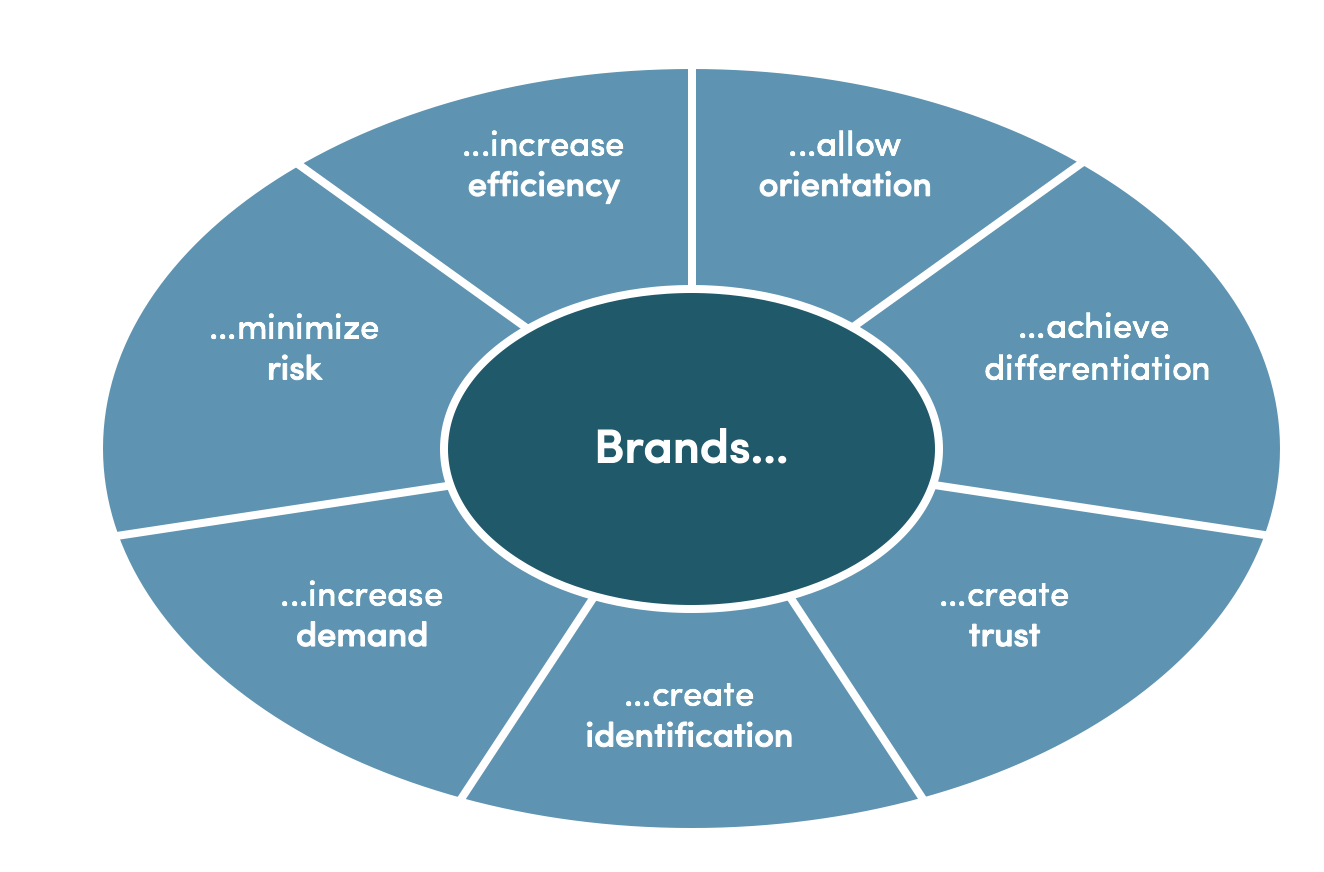The most common misconceptions can be subsumed under the following three points:
1. Overestimated rationality – underestimated emotionality
“B2B transactions are too rational and price-driven to allow emotional components such as brands to play a decisive role.”
This typical argument against the significance of brands is true insofar as that prices in B2B transactions play a major role. Often decisions involve a bigger budget, and larger investments mean a higher risk for the buyer. Yet especially when it comes to minimizing decision risks, a brand and the trust that customers put into it are crucial. An oft-quoted example puts it in a nutshell: “Nobody ever got fired for buying IBM.” In a McKinsey survey1 across 1,000 decision-makers, 42% of the interviewed purchasers quoted reduced risk as the most relevant factor relating to brands. Trust is a central factor and purchasers whether deciding singly or collectively are in any event humans, who, in making professional decisions, rely on their gut instincts in no small measure. In his book “Blink - The Power Of Thinking Without Thinking” Malcolm Gladwell explains how decisions in most business transactions are, to a large extent, actually guided by first impressions which are made in a few split seconds. When taking a decision, the decision-maker draws upon recollections, images, and, most importantly, stored emotions.
Besides having a decisive effect on purchasers, brands also have a positive impact on employees. Those who can identify with the brand in question are proud to work for the respective company and become valuable ambassadors for recruiting new employees.
2. Unwarranted distinction between employees and brand
«Das Wichtigste in unserem Geschäft sind unsere persönlichen Kundenbeziehungen – die Marke spielt dabei keine Rolle.»
It goes without saying: personal relationships in B2B business are extremely important. Brands however do not function independently of these relationships, in fact they serve to underscore them and have a significant influence on how customer relationships are conducted. The brand’s role here is the unifying element, giving a consistent impression and thus influencing decisions, especially when as in a B2B transaction a large number of people are involved. Thus it is no coincidence that many industrial companies spend substantial resources on training programs to instruct their employees and distribution partners on their brand values and teach them appropriate communication, management and conduct. The more people – technicians, managers, specialists, etc. – are involved, the more important a consistent and brand appropriate conduct becomes. Employee-driven factors such as professional expertise, candor and honesty in customer dialogues are the main drivers of discernable brand strength in a B2B company. Consequently brand management requires an integrated approach that includes such topics as the structuring of brand-compliant customer relationships, sales training or management schooling.
3. Overstrained internal focus
“Our products are too sophisticated to be communicated in simple brand claims.”
Certainly purchases and transactions in a B2B context are often far more complex than in a B2C environment. Purchasers are faced with ever larger volumes of communicated information such as product features, technical data, specifications or key performance indicators, just to list a few. Theoretically all this information would require hundreds of decisions for and against a product. This is exactly where the brand takes on a central function in the decision-taking, enhancing communication efficiency by aggregating core values and associations, thereby projecting security and creating trust. It reduces the complexity of the offer and acts as an anchor and orientation aid, and helps decision-makers to take a preliminary decision thus shortening the decision-making process considerably.
Overall, B2B brands do not differ significantly from B2C brands with regard to their primary functions and their spheres of influence. Brands...
... allow target groups to orient themselves in the diverse offering of products
... achieve differentiation by a clear positioning in the competitive environment
... create trust by consistently fulfilling the brand promise
... create identification both among employees as well as customers and business partners
... increase demand and strengthen loyalty and willingness to recommend
... minimize the perception of risk at the time of taking a purchase decision
... increase the efficiency in communicating values and customer benefits across the range of products and services


